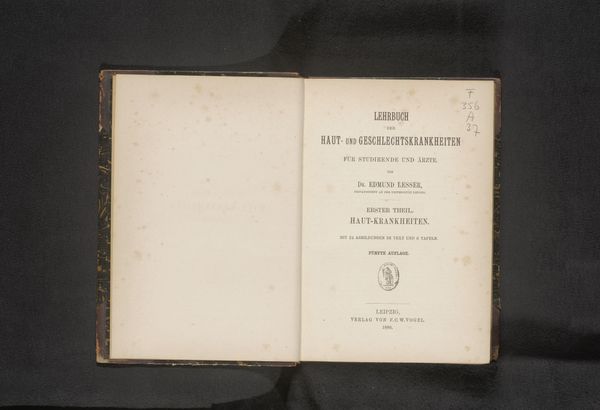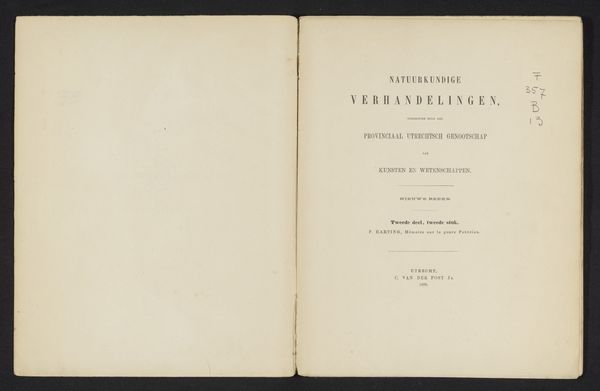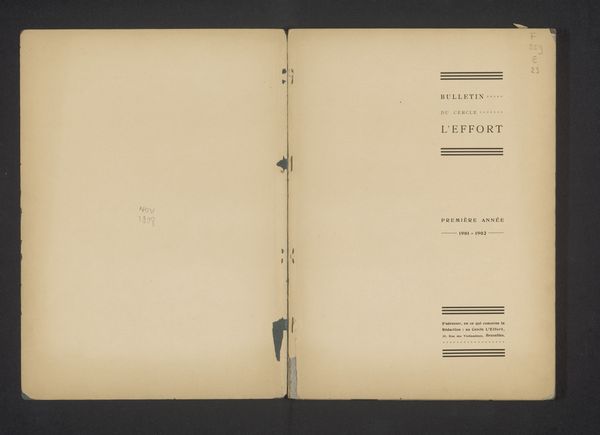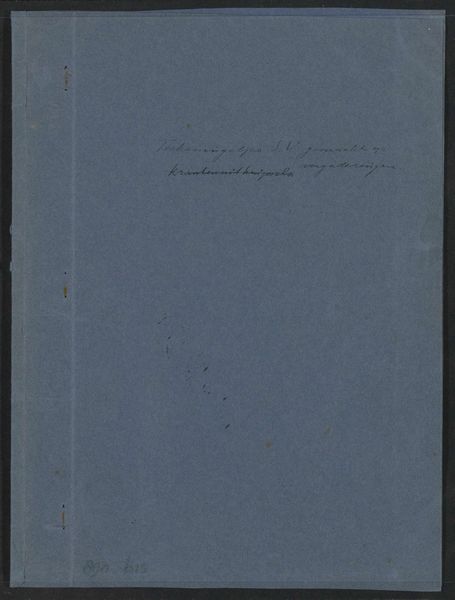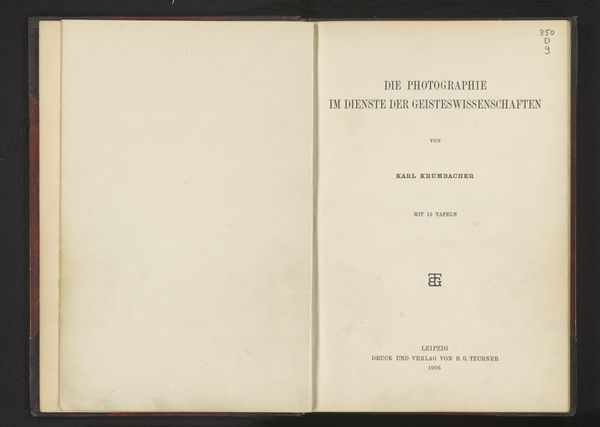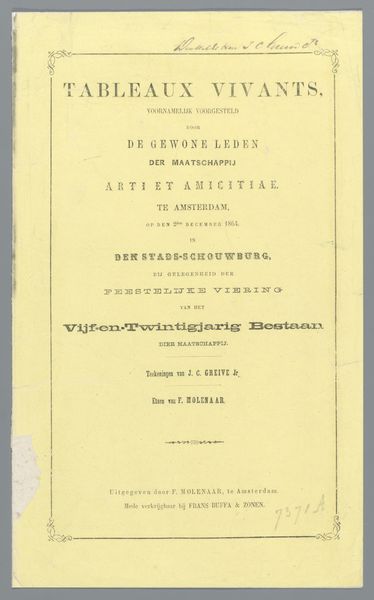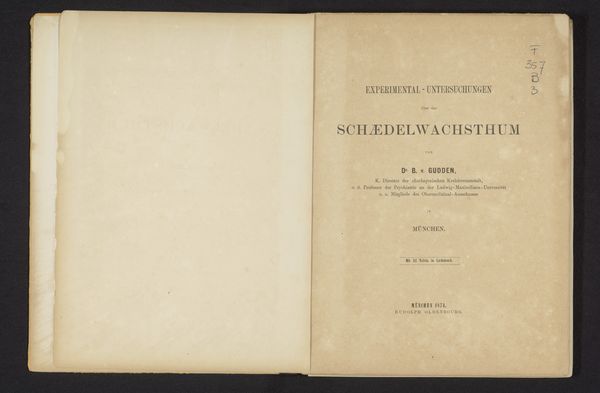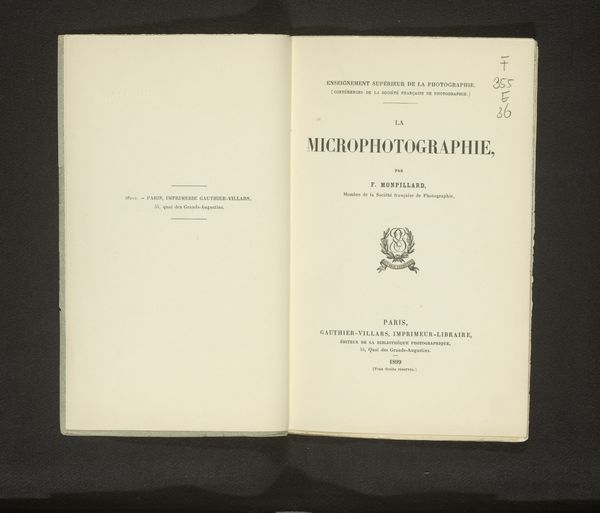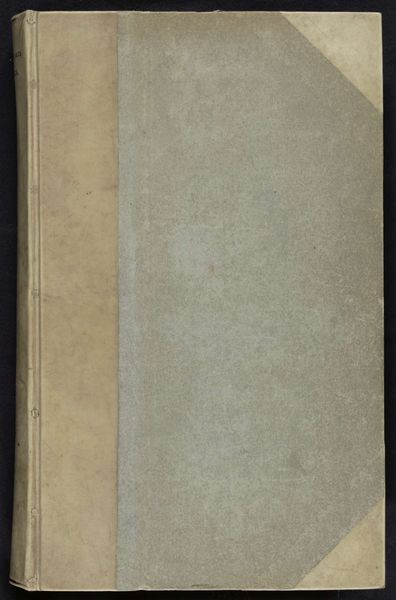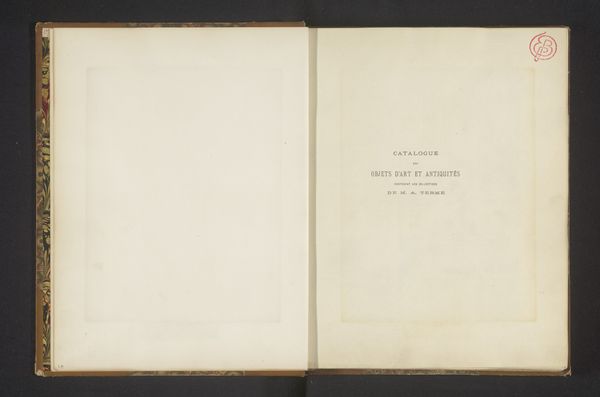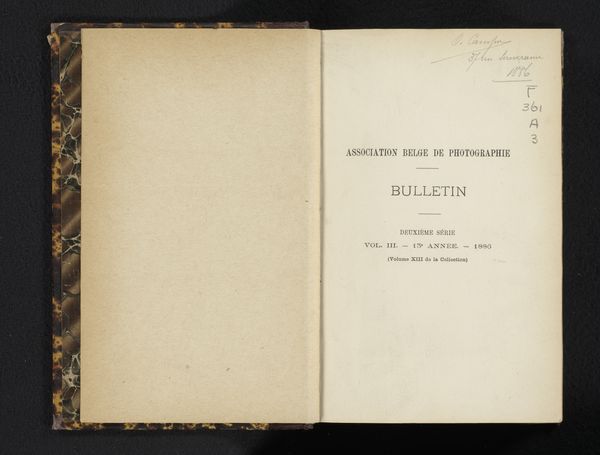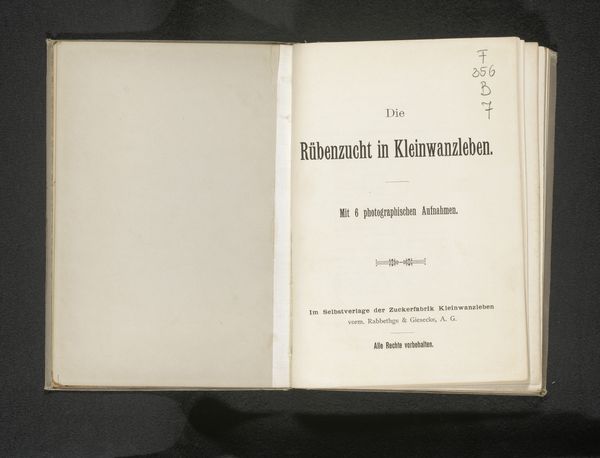
lithograph, print, paper, typography
#
aged paper
#
homemade paper
#
pale palette
#
lithograph
# print
#
light coloured
#
personal journal design
#
paper texture
#
paper
#
personal sketchbook
#
typography
#
fading type
#
romanticism
#
delicate typography
#
sketchbook art
Dimensions: height 233 mm, width 309 mm
Copyright: Rijks Museum: Open Domain
Editor: So, this is the cover for 'Twaalf scènes met soldaten en mythologische figuren'—Twelve Scenes with Soldiers and Mythological Figures—a lithograph from 1822 by Johann Georg Schinz. There's something really simple, almost austere about the design... I find myself strangely drawn to the pale paper and fading typography. What do you see when you look at it? Curator: Hmm, that's a beautifully fragile object, isn’t it? You almost want to whisper around it. The starkness you noticed – that’s a deliberate choice, I reckon. Notice how the lettering, though precise, is light? Almost like a half-remembered dream. This would have been created not long after the Napoleonic wars, and the Romantic style hints at a yearning for something beyond the battlefield – hence the mythological figures we’d find if we opened it. It makes you wonder, doesn't it, about what Schinz was trying to process, mixing soldiers with ancient myths? What sort of comfort or sense did this project give its author, during its creation? Editor: That's fascinating. I hadn't considered the post-war context. Does the choice of lithography contribute to that sense of yearning, do you think? Curator: Absolutely! Lithography allowed for a softer, more tonal quality than traditional engraving. It lends a gentler hand. Do you see the aged paper? A different texture there might change our interpretation entirely. That whisper, again. Perhaps the figures offered some type of safe-harbor amidst a harsh environment? Or offered an idealistic way of dealing with their problems. Editor: It’s funny, I came in thinking this was just a simple cover, but now I'm seeing it as a reflection on war, myth, and…hope? Curator: Isn’t it always the way with art? What starts as a surface becomes a mirror. Thank you for letting me peek at myself within this object! Editor: Definitely. Thanks, that was insightful!
Comments
No comments
Be the first to comment and join the conversation on the ultimate creative platform.
